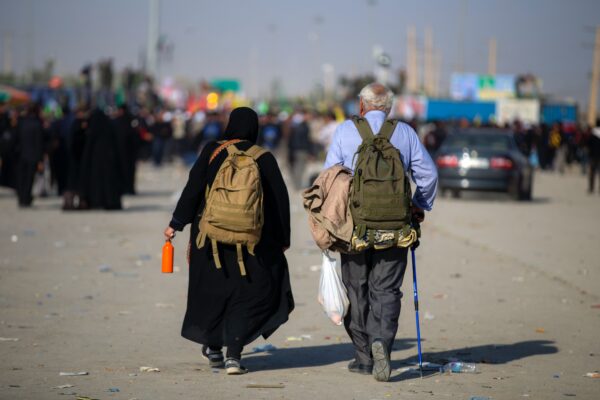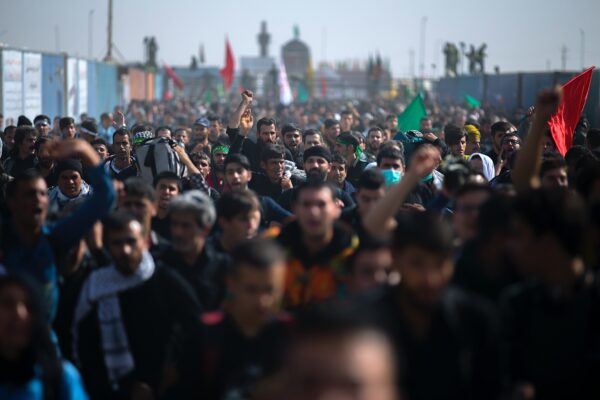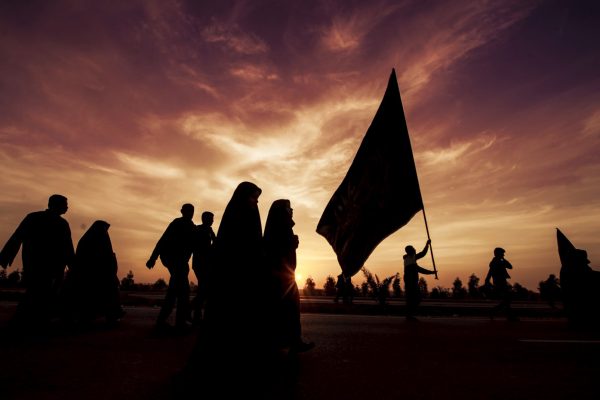Today is the day of Arbaeen, a culmination of the world’s largest annual peaceful gathering.
Today is the day of Arbaeen, a culmination of the world’s largest annual peaceful gathering.
As the annual commemoration of Arbaeen draws millions of Muslims together, many still do not know about the world’s largest annual peaceful gathering. What is Arbaeen and why do millions of Muslims commemorate it?
What s the World’s Largest Annual Peaceful Gathering?
We’re talking annual here, not one-off events. Think about it… Hajj? That’s the answer that would initially come to my mind and probably to most other Muslims too, right?
Wrong. 3.7 million people complete the pilgrimage to Saudi Arabia every year and although it sounds like a heck of a lot, it actually pales in comparison to the approximately 20-25 million that have been attending Arbaeen in recent years.
What is Arbaeen?
Arbaeen marks the fortieth day after the martyrdom of Hussain-ibn-Ali on the grounds of Karbala. Hussain was the grandson of our beloved Prophet (SAW), and is revered worldwide not just by Muslims, but also by many people of other faiths. Indeed, there is a famous hadith in the book of Tirmidh that states: ‘Hussain is from me and I am from Hussain’, which shows the strong love the Prophet felt for his grandson and explains the reverence that most Muslims have for Hussain.
Hang on, What Exactly Happened in Karbala to the Prophet’s Grandson?
Time for a quick history lesson: on the tenth of Muharram some 1400 years ago, Hussain, son of Ali (son-in-law of the holy prophet SAW) was martyred on the plains of Karbala by the Bani Ummayah Caliphate. It was a great tragedy because he was of course, a grandchild of the Prophet through his mother, Fatima, and the majority* of the Prophet’s male descendants who were accompanying Hussain were also massacred, with many being slaughtered to pieces. Amongst some of the martyrs was Hussain’s six-month-old infant, who died for want of water; the eighteen-year-old, Ali-Akbar who had a spear thrust in his chest, and Qaasim-bin-Hassan (Hussain’s teenage nephew), who had his body mutilated.
Hussain stood against tyranny, oppression, and injustice, and that is why he lives on in the hearts of millions to this day. He transcends the boundaries of religion and race. Edward Gibbon, widely considered the best historian of his time, states that: “In a distant age and climate, the tragic scene of the death of Hussain will awaken the sympathy of the coldest reader”.
(*Note: It was the majority who were slaughtered, not all. If it was all, then there would be no Syeds or descendants of the prophet today).
So, What Happens During Arbaeen?
Each year, millions upon millions of people descend upon Karbala, in Iraq, where the shrine of Hussain-ibn-Ali is located. The majority of these people make a symbolic journey from Najaf, also a city in Iraq, where the fourth Islamic caliph, Ali, is buried and then walk to Karbala. The walk from Najaf, on average, takes approximately three days, but some people take longer and people are encouraged to go at their own pace. Most will plan to time their trip so that they are present in Karbala for the day of Arbaeen. Many Iraqis from the South, especially cities like Basra, make the journey by foot over ten days, with two million people coming from neighbouring Iran alone. However, pilgrims come from all over the world, including the UK, USA, Indian subcontinent, and other parts of the Arab world.
What is so Special About Arbaeen?
Perhaps the most potent thing about Arbaeen is the sheer amount of altruism that is displayed by people, mostly locals, for the love of Hussain. The millions who visit the shrine are given free food and accommodation en route. The journey from Najaf is approximately 75km. The logistics are mind-boggling.
How can so many people be fed? How can so many people be given places to stay overnight? Some of my family members have personally witnessed the event and they were offered foot massages, tea, clothing and medicine too, all for free. In fact, visitors are often advised not to bring anything with them except the absolute bare essentials as all else will be provided. The people supplying these free commodities and services often see it as a religious duty and as a way of pleasing the almighty. It is also remarkable that when looking at the statistics, the number of visitors are increasing each year.
Has it Always Been Like This?
No. Under the regime of Saddam Hussain, it was extremely difficult and dangerous to make this journey. In fact, many people were at risk of being killed or sentenced to prison simply for visiting the prophet’s grandson. Under the regime, the pilgrimage to Imam Hussain was banned for around three decades and most people had to travel at night and stay hidden. In Saddam’s time, there were checkpoints set up along the perimeters of Baghdad and soldiers would turn away anyone intending to visit the shrine and arrest those who defied the authorities.
After Saddam Hussien was killed, there was a period where some Iraqis who felt that even though the event of Arbaeen was about mourning, they could actually rejoice because they were able to carry out the journey freely.
However, this was not to last. When ISIS invaded parts of Iraq, they too echoed Saddam’s sentiments about the pilgrimage and many visitors were killed making the journey. When ISIS was declared finished in 2017, many people were glad because the roads were made safe once again. The Iraqi government has given strict orders to the local authorities to make sure that security is tight. All men and women are searched at certain points because in the past, there have been suicide bombers attempting to sabotage the pilgrimage.
Interestingly, not only did ISIS make it difficult for the lovers of the prophet’s family to visit Hussain’s shrine, but since minorities such as Christians were also being oppressed under ISIS rule with their churches under attack, many of them found sanctuary in Karbala and in Najaf in 2014. These two cities announced that they were ready to host any Iraqis suffering at the hands of ISIS, regardless of their beliefs.
When is the next Arbaeen pilgrimage due to take place?
Since Arbaeen takes place forty days after Ashura, or the 10th of Muharram, it occurs on the 20th of Saffar. This year, in the Gregorian calendar, that is expected to fall on the 5th of September 2023.
Where Can I Learn More About the Tragedy of Karbala?
- Some great articles about the events that led up to Karbala and also describes the tragedy itself, can be found here and here.
- If you prefer visuals, there is a four-and-a-half-minute cartoon on YouTube that summarises the tragic events that are commemorated even to this day and that can be found here, as well as on TMV.
- Here is another article that explains what happened in Karbala and what happens on Arbaeen, which can be found here.
Sources:
- Foreign Travel advice: Saudi Arabia
- Emily Garthwaite: Road to Arbaeen
- Gibbon, E., The Decline and Fall of the Roman Empire, London, 1911, volume 5, pp. 391-2 (06/10/19)
- ISIS and Arbaeen
- To Karbala They Travelled
- Reviving the Pilgrimage
- Iraqi Christians Find Safe Haven





